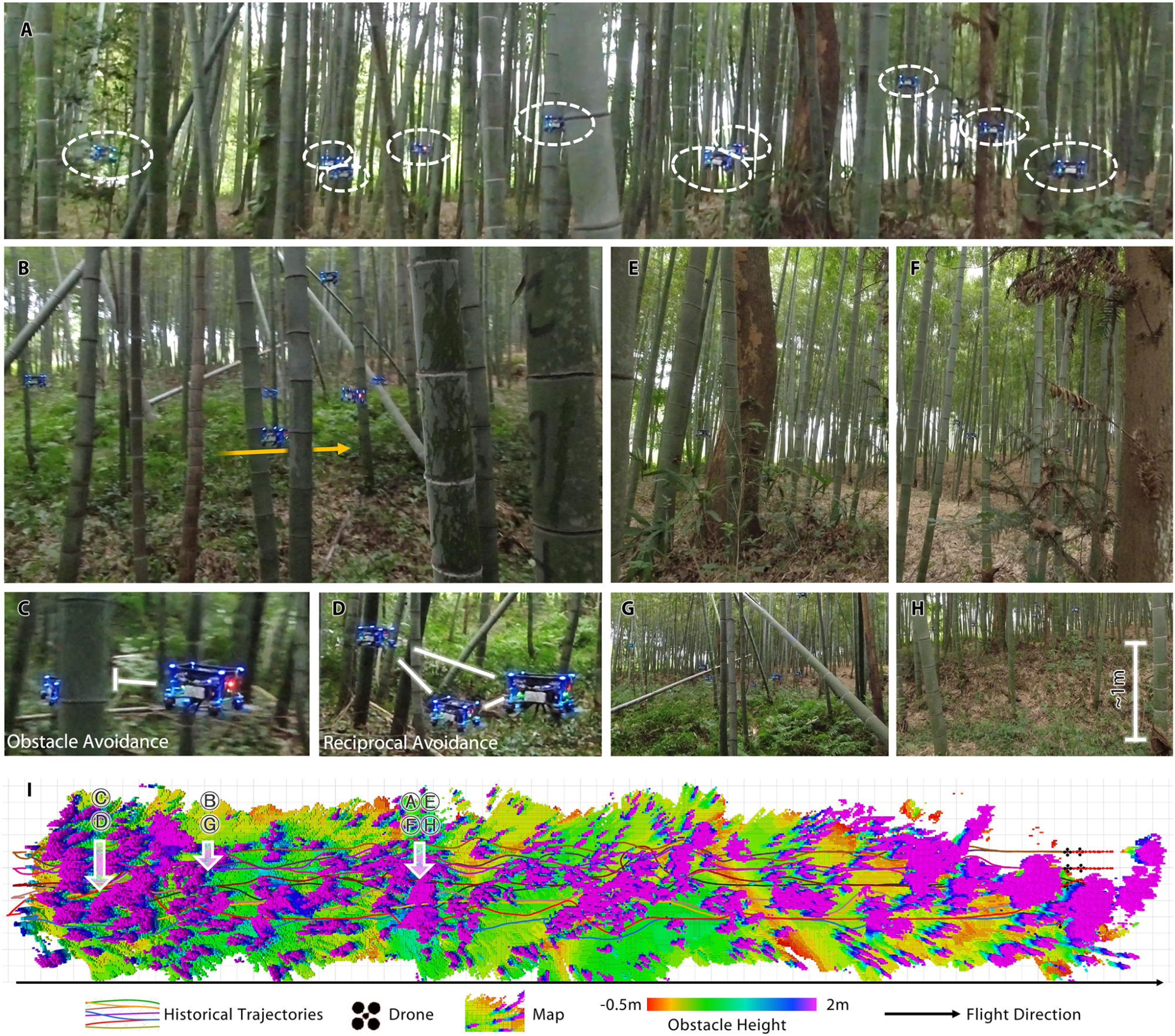Versatile, Robust and Simulatable Multi-Robot SLAM
Semester/Masters Project
This project aims to develop multi-robot SLAM capabilities able to perform in such challenging, real environments, forming the basis of navigation autonomy and coordination of a swarm of drones.
 Mapping and navigation of a drone swarm in a clustered forest area [1]
Mapping and navigation of a drone swarm in a clustered forest area [1]
Background
Recent work on multi-robot systems with collaborative autonomy has made significant strides towards developing robotic teams capable of performing complex tasks in real, complex settings as shown above. Right at the core of such capabilities is the capability to collaboratively perform SLAM (Simultaneous Localization And Mapping) within such multi-agent systems that can operate efficiently and in challenging real-world environments, which is the main goal of this project.
Description
The aim of this project is to develop key components of a multi-robot SLAM system that is robust in challenging environments and adaptable to different scenarios, ranging from environmental monitoring to search-and-rescue operations. The envisioned system will research integrating complementary onboard sensor modalities (e.g., cameras, LiDAR, and IMU), machine learning methods, and distributed communication systems to provide precise localization and mapping exhibiting resilience to sensor failure and sufficient efficiency to be deployed onboard small platforms, such as drones. The student will be guided to work towards a system architecture that can enable effective testing and optimization in state-of-the-art simulation engines, with the ultimate goal of reducing the gap between simulated experiments and real tests. The outlook is to create a system that can be employed onboard a small swarm of drones in a real setting.
Work Packages
- The work packages of this project involves, literature review of existing research on multi-robot SLAM, develop new SLAM algorithms for identified challenges, and validate algorithms in simulation and with real-world experiments
Requirements
- The students taking this project need to have programming experience with Python and C++, ROS and/or ROS 2
References
- [1] Zhou, Xin, et al. “Swarm of micro flying robots in the wild.” Science Robotics 7.66 (2022): eabm5954.